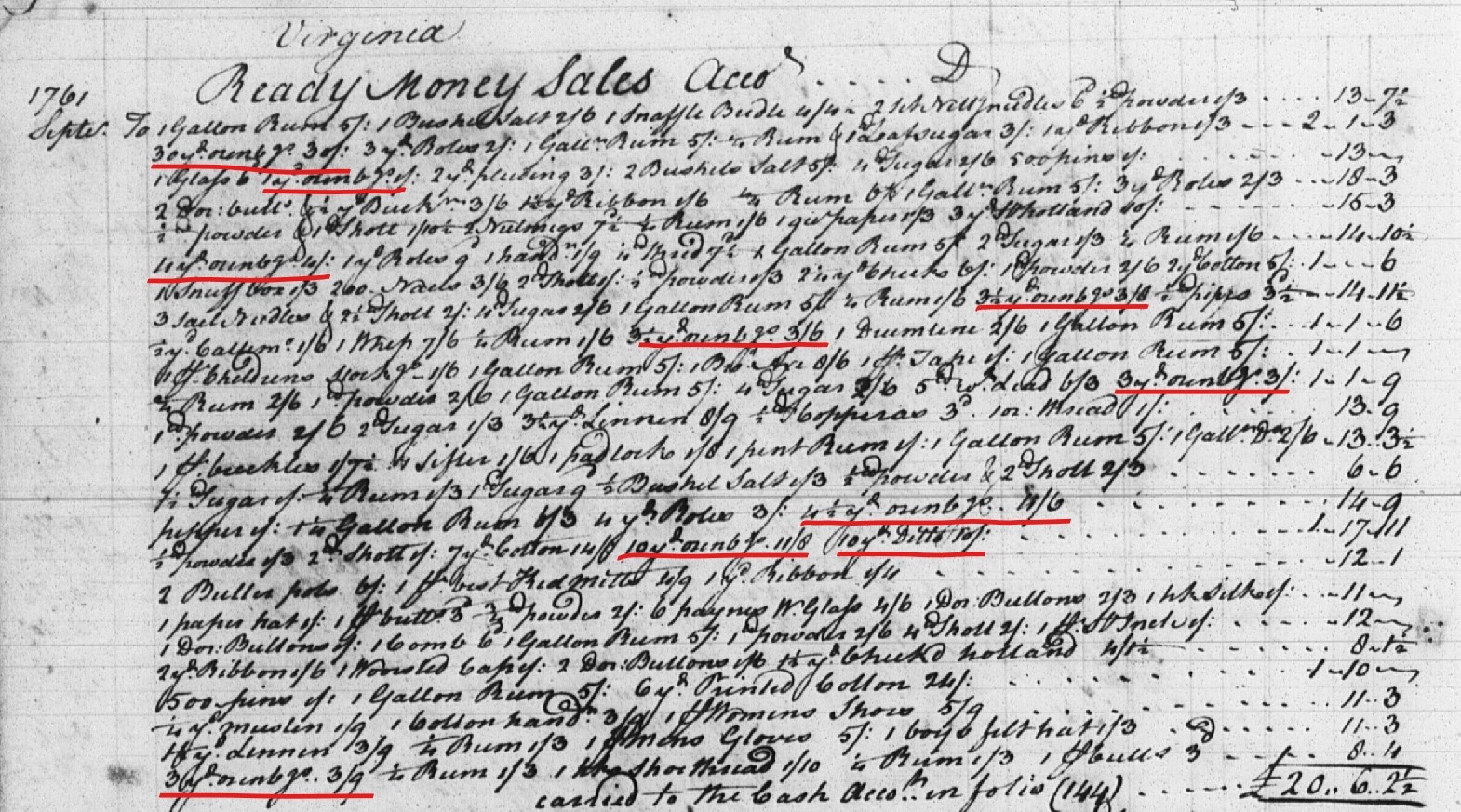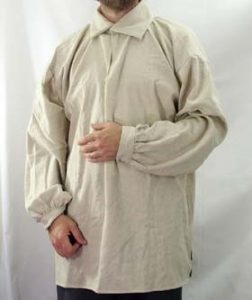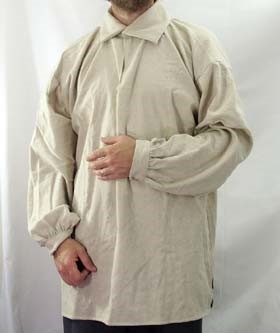James Wilson // AMH 4112.001 – The Atlantic World, 1400-1900
After looking through the Ready Money account (1760-1761) of Glassford and Henderson’s Colchester store in Virginia, there were a few items that stuck out to me because I had no idea what they were. One of which was Osnaburg, having never heard of this, I decided to look more into it what it was because I saw it being purchased quite a few times in September, 1761.[1] What was the item? What was it used for?

These questions were much easier to find answers to than I thought they were going to be. Osnaburg was a form of linen that was particularly coarse that was originally made in Osnabrück, Germany, which is where the name is derived. Osnaburg was used for quite a few things from napkins, to upholstery, to clothing.[2] The fabric doesn’t seem to have been a luxury item because it was used to make clothing for everyone, including slaves. In a 1761 slave advertisement from the Virginia Gazette, a runaway slave named Joe had been captured and was being held in the public jail in Williamsburg, Virginia, his only clothing described as ‘a ragged Oznabrigs Shirt’.[3]

Something of interest that I found was the probability of where this linen came was made. Osnaburg was originally imported to England from Osnabrück, Germany. By the 1730s, Scotland, which was attempting to become a larger economic power and trader in her own right, started to craft their own version of Osnaburg fabric.[4] The Edinburgh Linen Copartnery even sent one of their executives to Germany to learn how to properly make authentic Osnaburg, which the people particularly wanted.[5] Given the wars in Germany from 1756-1763, which caused their exports to go down, Scotland became the better choice for many nations to buy their fabrics from.[6]
This revitalization of the economy paid off, after all was said and done, with the work done by the many of the fabric companies, Scotland provided millions of yards of linen that was exported to England and other parts of Europe. This piece of linen that was bought in a small shop was actually a piece of economic revival for Scotland based off of copying a form of linen created by a town in Germany.
[1]Alexander Henderson, et. al. Ledger 1760-1761, Colchester, Virginia Folio 13 Debit, from the John Glassford and Company Records, Manuscript Division, Library of Congress, Washington, D.C., Microfilm Reel 58 (owned by the Mount Vernon Ladies’ Association).
[2] C. E. Davis. “Inventory of Col. Bridger’s Estate.” The William and Mary Quarterly 22, no. 2 (1942): 186-87. http://www.jstor.org/stable/1925299; Alastair Durie. “Imitation in Scottish Eighteenth-Century Textiles: The Drive to Establish the Manufacture of Osnaburg Linen.” Journal of Design History 6, no. 2 (1993): 71-76. http://www.jstor.org/stable/1315959.
[3] James Galt. “Runaway Announcement.” Virginia Gazette (Hunter), Williamsburg, January 16, 1761. http://www2.vcdh.virginia.edu/gos/search/relatedAd.php?adFile=rg61.xml&adId=v1761010146, Accessed December 5, 2016.
[4] Durie, Alastair. “Imitation in Scottish Eighteenth-Century Textiles: The Drive to Establish the Manufacture of Osnaburg Linen.” Journal of Design History 6, no. 2 (1993): 71-76. http://www.jstor.org/stable/1315959.
[5] Ibid.
[6] Ibid.
